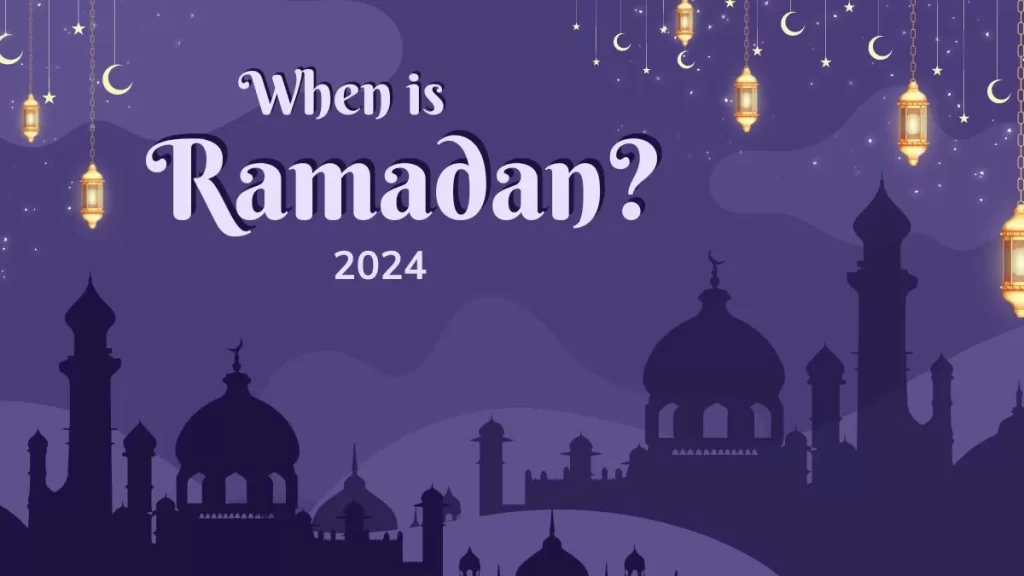When Does Ramadan End? A Guide to Eid al-Fitr
Muslims around the world observe Ramadan, the ninth month of the Islamic calendar, as a holy month of fasting, prayer, and reflection. It’s a time for spiritual growth, community building, and charitable giving. This article delves into the factors determining the end of Ramadan and the joyous celebrations associated with Eid al-Fitr.
The Lunar Cycle and the Islamic Calendar
Unlike the Gregorian calendar followed in most of the world, the Islamic calendar is lunar-based. This means the months correspond to the cycles of the moon, resulting in a calendar that is roughly 10-11 days shorter than a solar year.
Since the Islamic calendar follows the moon’s phases, the exact dates of Ramadan change from year to year relative to the Gregorian calendar. Determining the end of Ramadan hinges on the sighting of the crescent moon, signifying the beginning of the next lunar month, Shawwal.
The Significance of Eid al-Fitr
Eid al-Fitr, also known as the “Festival of Breaking the Fast,” marks the joyous culmination of Ramadan. Muslims celebrate the end of the holy month with special prayers, festive meals, and exchanging gifts with loved ones. It’s a time for gratitude, forgiveness, and strengthening community bonds.
Eid Traditions:
- Eid Prayers: Muslims gather for special Eid prayers held in mosques or open-air prayer grounds. These prayers signify the official start of Eid celebrations.
- Feasting and Gift-Giving: Families and friends gather for elaborate meals featuring traditional dishes. Children often receive gifts and new clothes for the occasion.
- Zakat al-Fitr: Charitable giving is an important aspect of Eid al-Fitr. Zakat al-Fitr, a mandatory charity for Muslims who have the means, ensures everyone can participate in the Eid festivities.
Eid al-Fitr is a vibrant and joyous occasion, a time to celebrate spiritual growth, community, and blessings received during Ramadan.
Calculating the End of Ramadan: The Estimate and the Reality
Due to the lunar nature of the Islamic calendar, the exact date of Eid al-Fitr can’t be definitively pinpointed months in advance. However, estimates can be made based on astronomical calculations.
These calculations predict the date when the crescent moon will likely be visible after the new moon. However, the actual sighting depends on weather conditions and geographical location.
The Importance of Moonsighting:
Ultimately, the official confirmation of the end of Ramadan and the beginning of Eid al-Fitr relies on the sighting of the crescent moon by religious authorities in each locality. This sighting is then announced publicly, marking the commencement of Eid celebrations.
Regional Variations:
The moon sighting process can lead to slight variations in the dates across different countries and regions. This underscores the importance of relying on local religious authorities for the confirmed start of Eid al-Fitr.
Experiencing Eid al-Fitr: Traditions and Celebrations
Eid al-Fitr is a joyous occasion marked by specific traditions and celebrations:
- Preparing for Eid: In the days leading up to Eid, Muslims might prepare special dishes, new clothes for themselves and their families, and decorate their homes.
- Eid Prayers: On the morning of Eid, Muslims attend special Eid prayers, often wearing their finest attire. The prayers are followed by sermons emphasizing themes of gratitude, forgiveness, and helping those in need.
- Family Gatherings and Feasts: After prayers, families and friends gather for celebratory meals. Traditional Eid dishes vary by region but often include sweet treats and savory delicacies.
- Gift-Giving and Visiting Loved Ones: Exchanging gifts, particularly with children, and visiting loved ones, especially elders and those who are unable to leave their homes, are important aspects of Eid celebrations.
- Socializing and Entertainment: Eid is a time for socializing with friends and extended family, enjoying community events, and engaging in festive activities.
The specific traditions and celebrations may vary depending on cultural background and location, but the essence of Eid al-Fitr remains the same: a joyous celebration marking the successful completion of Ramadan and a time for spiritual renewal and strengthening social bonds.
Looking Beyond the Dates: The Enduring Spirit of Ramadan
While the end of Ramadan and the festivities of Eid al-Fitr are significant, the true essence of the holy month lies in the spiritual growth and self-reflection it fosters.
The lessons learned during Ramadan, such as discipline, empathy, and compassion, are meant to be carried forward throughout the year. The end of Ramadan doesn’t signify the end.



